All about action rough

Rough action is an elegant flowering shrub. The plant is beautiful and unpretentious. Therefore, even novice gardeners are happy to plant it on personal plots.
Shrub description
Deytia is a plant that belongs to the hydrangea family. In Latin it is called Deutzia scabra. In nature, the shrub is found in Asian countries. It gets along well with other plants. In addition, the shrub feels equally well both in partial shade and in the sun.
The botanical description of this plant is in many ways similar to the description of lilac and hydrangea. The shrub grows up to 3 meters high. Its foliage is green, ovoid. Its surface is often covered with short down. Such terry rough foliage looks beautiful at any time of the year.
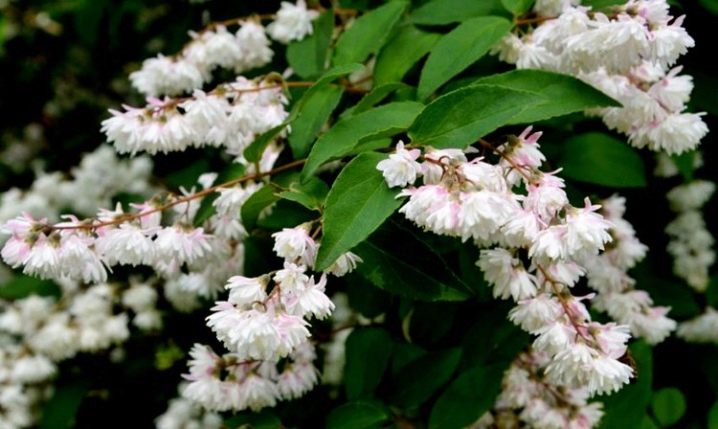
In early summer, the shrub is covered with small white or pink flowers. He looks especially attractive at this time. In the first three years after planting on the site, the plant does not bloom.
Varieties
In nature, there are many varieties of rough action. The most popular of these are the following.
"Candidissima"
This type of shrub grows up to three meters in height. The bush is covered with large snow-white flowers. They are collected in beautiful voluminous inflorescences. You can see them on the bush from June to July.
The plant is thermophilic. Therefore, for the winter it must be covered. Otherwise, it may simply freeze out.
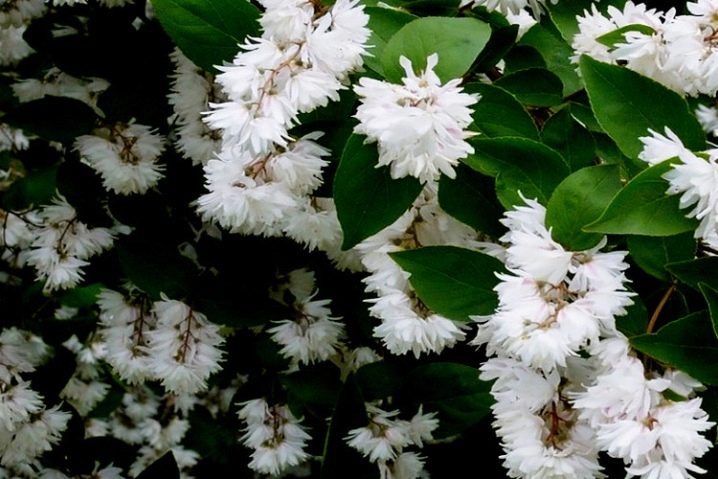
Codell pink
This is a stunted variety of a plant. The bush blooms profusely. Its buds are pink-white and rather large. They look very nice. The plant blooms in early summer. Flowering time lasts a month.
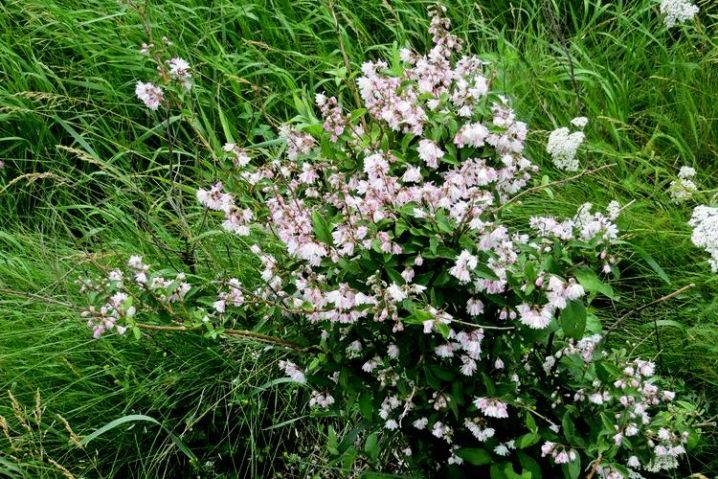
Strawberry Fields
This type of action can be recognized by its bright pink flowers. Terry buds are collected in large inflorescences. They look especially beautiful against the background of dark green foliage.
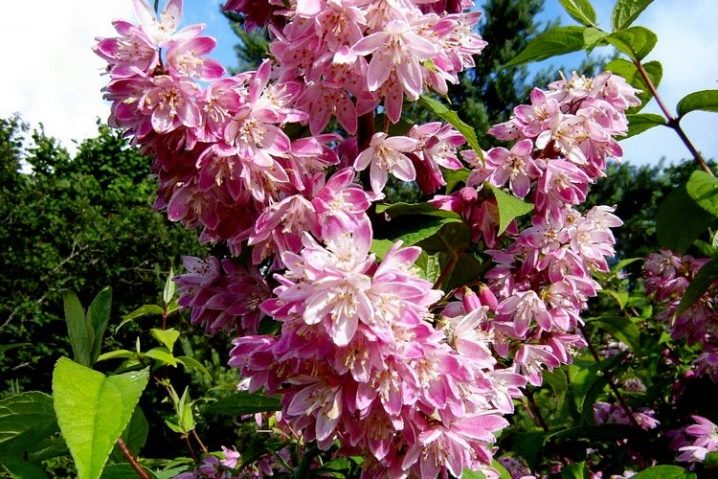
Whitest
This is a very beautiful hybrid plant. Its inflorescences are large, consisting of beautiful white buds. The foliage of the plant is elongated. A shrub can grow in one place for several decades in a row. Deytsiya whitest prefers the fertile composition of the soil. It grows best in partial shade. An attractive shrub is usually planted away from other plants.
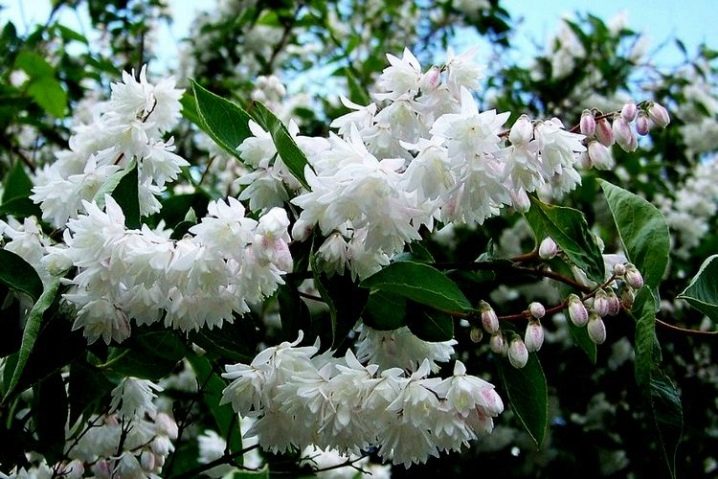
"Mona Lisa"
An abundantly flowering, medium-sized shrub is often used to create beautiful green fences. It blooms for a long time. The plant is frost-hardy. But in cold regions, it still needs shelter.

Amurskaya
This type of action is also often called small-colored. The plant has a beautiful spreading crown. An adult bush grows up to two meters in height. In summer, it is covered with white inflorescences. They look very nice and smell nice.
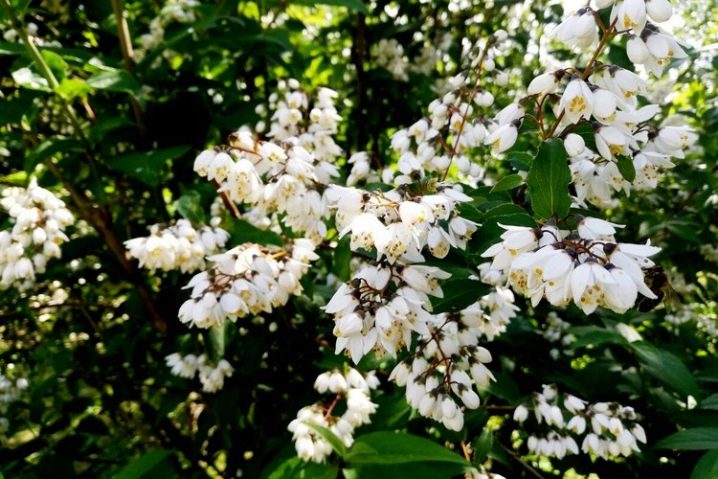
Pride of Rochester
It is a beautiful lush shrub with pink star-shaped buds. They usually bloom in mid-June. The plant prefers nutritious soil and needs regular watering. It endures winter calmly. Only young shrubs need shelter for this time.
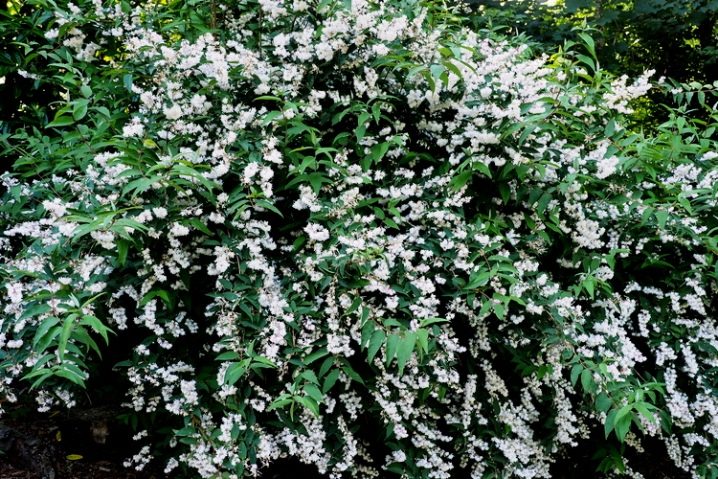
Marble
This plant has beautiful foliage covered with marble spots. The buds of the action are white with yellow centers. They look very beautiful and delicate. The plant is sensitive to cold. This must be taken into account when planting it on your site.
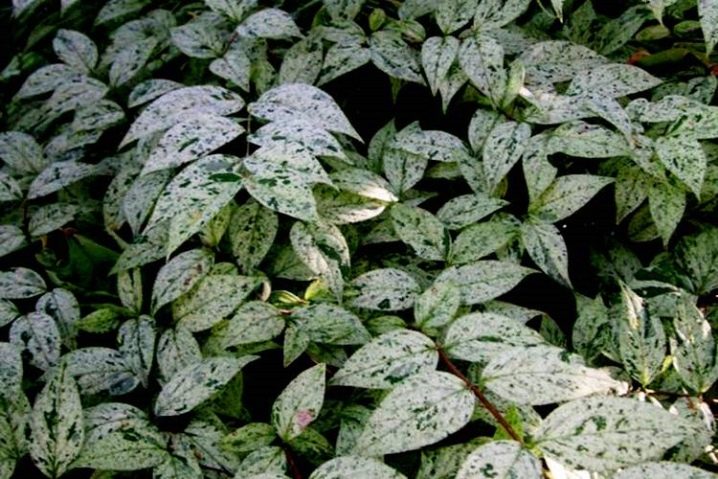
"Captivity"
A variety of shrubs called Plena looks especially impressive from mid-June to mid-July.Her flowers are double. They are collected in large bell-shaped clusters. Against the background of rough, dark green foliage, they look very beautiful.
This type of action is usually planted away from other plants. The bush does not need a special shelter for the winter.
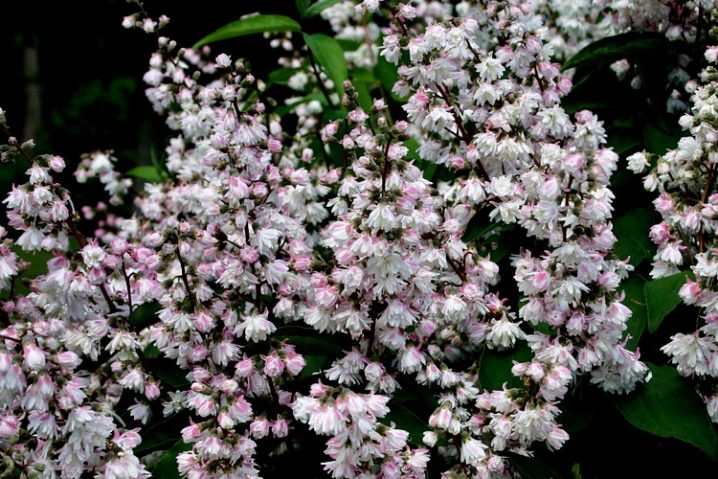
Other
In addition to the most popular types of action, there are others, lesser known.
-
Graceful. This type of shrub grows on average up to a meter in height. It begins to bloom at the end of June. The shoots of this action are thin and rather brittle. Moreover, the plant is frost-resistant. Therefore, it is not necessary to cover it for the winter.
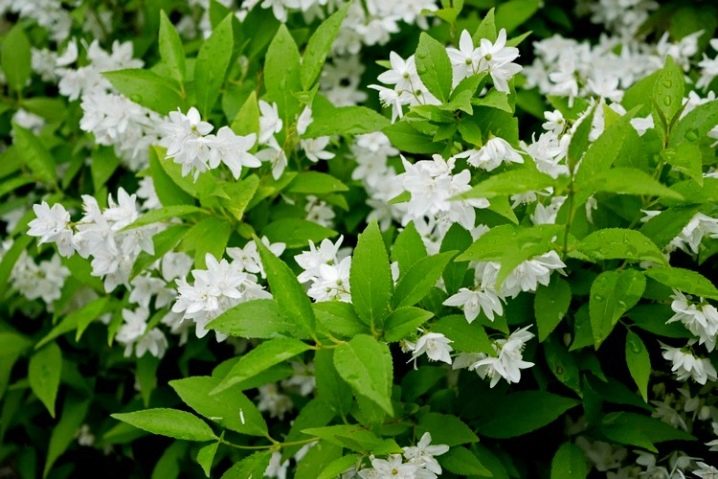
- Gorgeous. This type of action is resistant to most common diseases. It has long arched shoots. Therefore, it is often used to decorate areas.
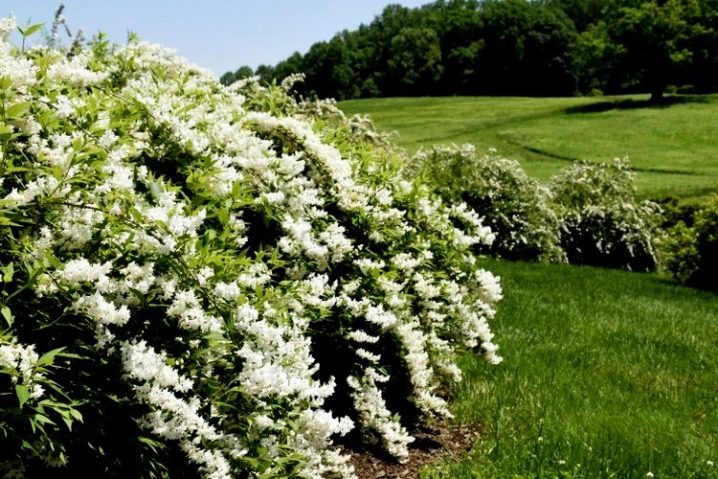
- Pink. This undersized hybrid was bred about 100 years ago. It has graceful arched shoots and delicate pink and white flowers.
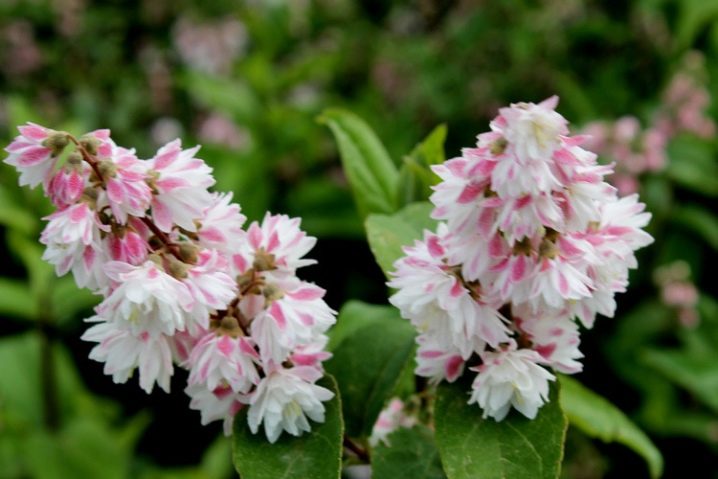
- Vilmorena. On average, such a shrub grows up to 60-80 centimeters. It has narrow foliage, covered with small teeth at the edges. The flowers of this plant are small, collected in neat inflorescences.

- Lemoine. This is another beautiful hybrid. It was obtained as a result of crossing Amur and graceful action. The shrub has a neat green crown. At the beginning of summer, it is covered with snow-white flowers. The flowering period lasts about three weeks. The plant is frost resistant. Therefore, many gardeners are happy to plant it on their plots.

All these types of action go well with each other. Therefore, they can be planted in the same area. The main thing is to provide each flower with proper care.
Planting and leaving
Before planting a shrub, you need to find a suitable place for it. Action grows best in partial shade. The soil in the selected area must be fertile. It is important that its acidity is neutral.
The optimal time for planting plants is spring. Saplings with an open root system are best planted in open ground after the snow melts. Plants purchased in containers are transplanted to a permanent location throughout the season.
A seedling for planting must be chosen carefully. It must be healthy and free of mold. The day before planting, the plant must be placed in a container with a solution of "Kornevin" or a similar preparation.
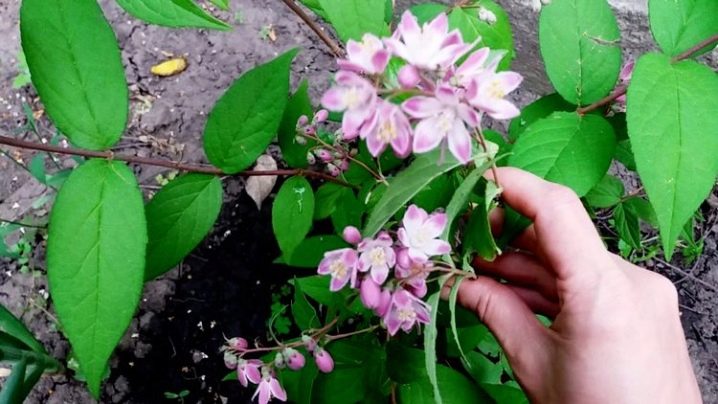
The planting process consists of the following steps.
-
First you need to dig a hole in the area. Its depth should be within 40 centimeters.
-
Next, you need to put compost into the hole. On top it is lightly sprinkled with fertile soil.
-
The roots of the seedling must be carefully straightened before planting. After that, the plant can be lowered into the hole.
-
Sprinkle the roots with earth from above. The soil around the plant is slightly compacted.
-
In order for the shrub to take root better, its branches are shortened by 2-3 buds.

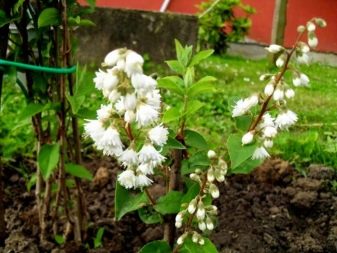
After planting, the action must be watered. For irrigation, it is worth using warm, settled water. It is advisable to mulch the soil near the trunk. Usually dry straw or peat is used for this.
In the future, the plant will need proper care. Agrotechnics of action rough is as follows.
-
Watering. This shrub is drought-resistant. Therefore, it is often unnecessary to water most of its varieties. Usually, the soil next to the bushes is irrigated twice a month. In dry weather, this is done more often. About 10 liters of water are poured under each plant. In rainy weather, watering is reduced. In general, the gardener is advised to pay attention to the condition of the foliage. If it starts to fade, then the plant needs to be watered.

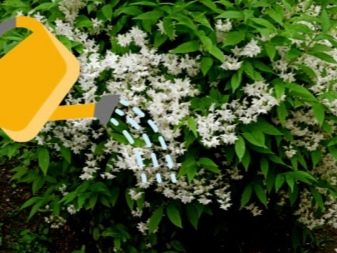
- Top dressing. Since gardeners apply fertilizers to the soil when planting plants, the shrub does not need feeding in the next two years. It is necessary to fertilize plants from the age of three. As a rule, gardeners use manure diluted in warm water for feeding. About three liters of the product are poured under one bush.Other organic fertilizers can be used instead. "Chemistry" is rarely used for feeding shrubs.

- Pruning. Action, like other bushes, must be cut regularly. Pruning is usually done three times a year. For the first time, the bushes are cut in the spring. At this time, the gardener needs to remove all branches that are frozen over. They are distinguished by the absence of young buds. After that, the remaining shoots must be shortened. This will help speed up the growth and development of the scions. In summer, the bushes are pruned if the crown becomes too thick. In the fall, the plant is pruned to the first healthy bud. It is important to use clean, decontaminated tools to trim shrubs.
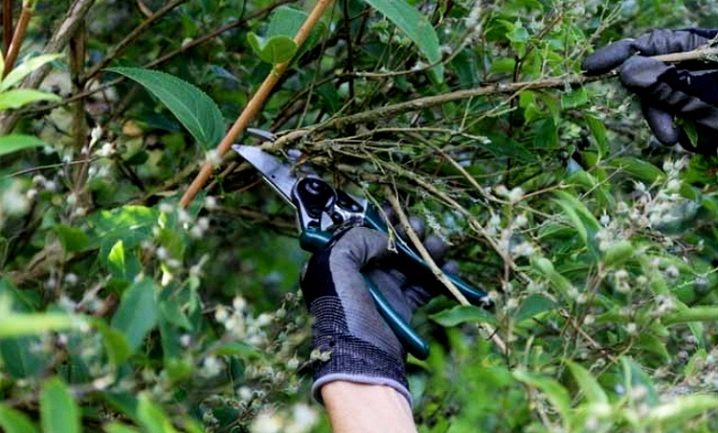
- Preparing for winter. The process of preparing for winter also plays an important role. At the end of summer, plants stop watering. At the end of September, the shrub is covered. It is important to take into account its winter hardiness. If the plants are not afraid of the cold, dry foliage or peat is simply laid out next to the trunks. Varieties of action, which are characterized by weak resistance to frost, are additionally covered with spruce branches or waterproof material. When covering a plant for the winter, it is worth remembering that in the second year after planting, its stems become hollow inside, which means that they are weak and brittle.
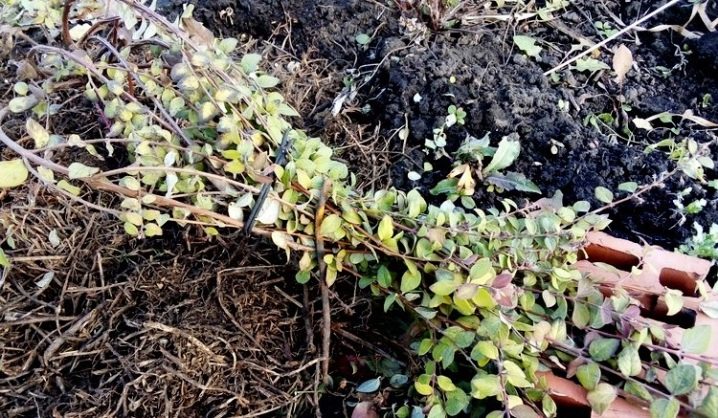
- Pest control. Rough action is resistant to attacks of most garden pests. But in some cases it can be attacked by a bumblebee proboscis. You can protect a plant from this pest by providing the culture with proper care. If there are too many pests on the site, the gardener should use proven insecticides.

Proper plant care allows you to grow a healthy shrub without any problems.
Reproduction
Young bushes can be propagated in several basic ways.
- Seeds. Planting material can be collected at home. They do this at the end of September. In the spring, seeds are planted in boxes with a nutrient substrate. It is not necessary to bury them in the soil. Sprinkle the seeds with river sand from above. The soil is sprayed with warm water from a spray bottle. After that, the containers are covered with a transparent film. They remove it only after the first shoots appear. After 30-50 days, when the seedlings grow up, they can be planted in open ground.
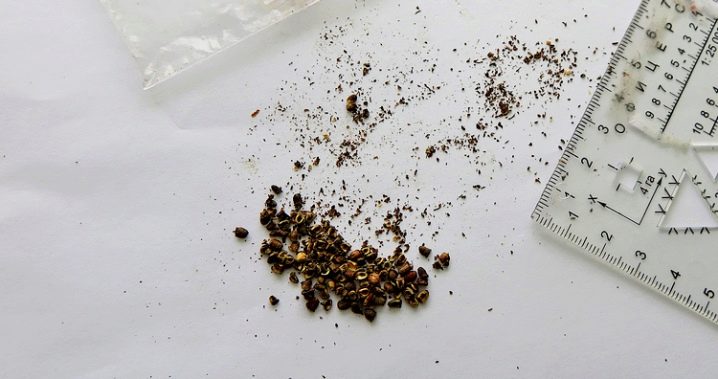
- Cuttings. Most often, action is propagated by green cuttings. They are cut at the end of spring. The length of each cutting should be within 20 centimeters. The lower cut is treated with "Kornevin", and then immediately buried in the ground. The plant is thermophilic, so the cuttings are best placed in a greenhouse. After the first shoots appear, the plant can be transferred to open ground.

- Layers. Thus, the plants are propagated in the spring. Healthy shoots should be selected at this time. Each of them must be carefully tilted to the ground and secured with a metal bracket. Next, sprinkle the shoot with loose soil or peat. The place where the cuttings are buried must be watered regularly. The next year, the rooted seedling can be separated from the mother plant.
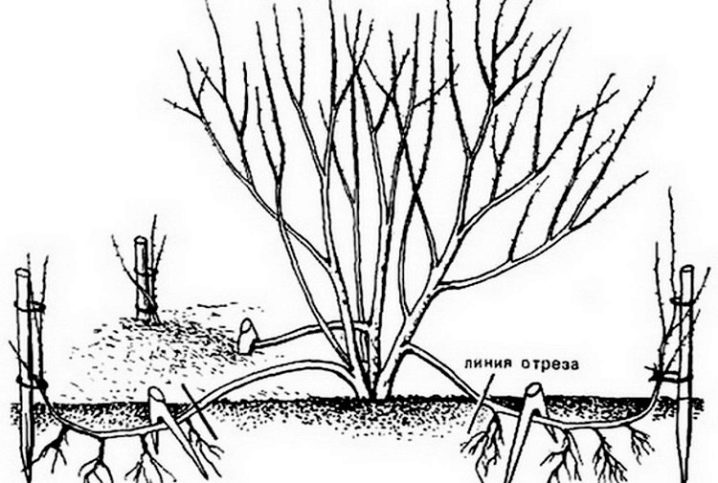
- By dividing the bush. Only adult shrubs can be divided in this way. The plant is carefully dug up. The rhizome is divided into several parts with a sharp knife. After that, the delenki are planted in the soil. The plot is watered with warm water. Young seedlings are looked after in the same way as other adult plants.
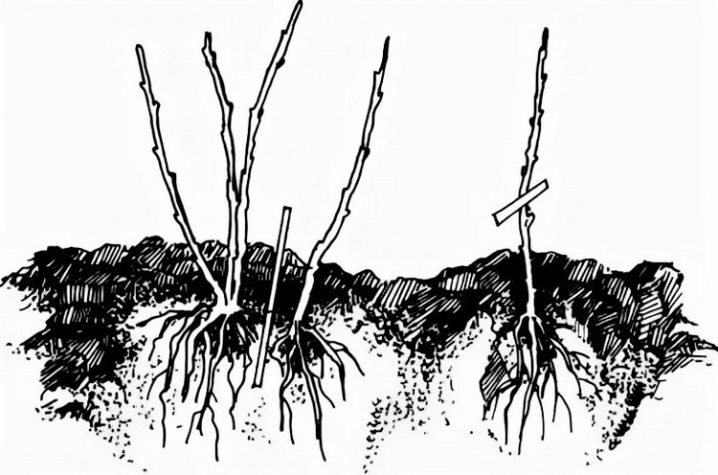
- Root shoots. Over time, "children" are formed next to the adult shrubs. This young growth can also be used to propagate shrubs. It is carefully dug up, separating it from the mother plant with a sharp knife or shovel. The separated plant is planted in regular holes.

If done correctly, the plant will quickly adapt and will soon begin to bloom.
Use in landscape design
Since there are many types of action in nature, it can be used in different ways in landscape design. Many gardeners plant action away from other plants.Usually the shrub is located next to the gazebo or under the window.
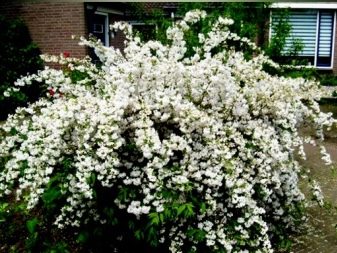
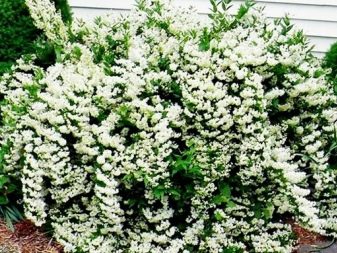
Tall bushes look beautiful against the background of evergreen and deciduous plants. Low-growing ones are often used to create spectacular borders. Rosehips, barberries and lilacs can be suitable neighbors for medium-sized shrubs. If these plants are planted nearby, they will bloom in turn. Therefore, the site will always look beautiful.
An exotic oriental shrub can be made a real decoration of your site. The main thing is to pay enough attention to caring for him.

































































The comment was sent successfully.